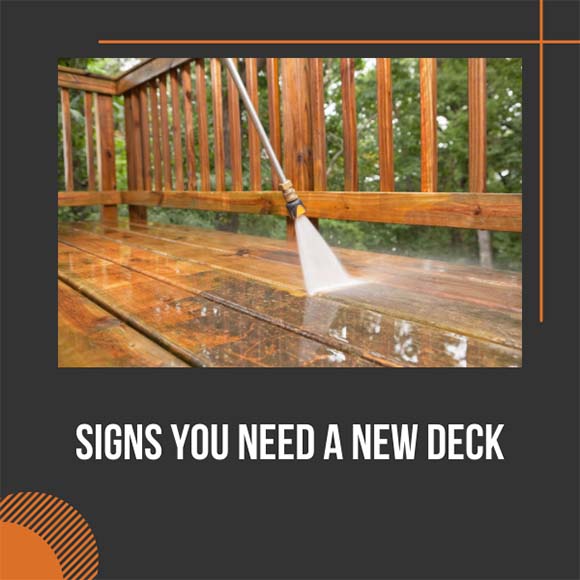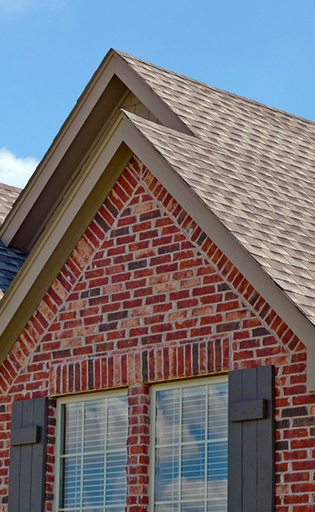Signs You Need a New Deck
Feb 20, 2023

Your deck can be the center of your backyard, where your family gathers, where you host barbecues, and maybe even where you work on sunny days. Building a deck or patio can be a large investment of time and money, so it’s important it stands the test of time. But nothing can last forever. Let’s review the telltale signs it’s time to replace your deck.
How Long Do Decks Last?

It’s helpful to know how long decks typically last before you decide on installing a new deck. Typically, decks last between 10-50 years, depending on the material. Untreated wood decks usually max out at 30 years, but composite materials can last 50. Several factors affect the lifespan of a deck, including:
Signs It’s Time to Replace Your Deck

Let’s review the warning signs that you need a new deck. Consider calling a contractor if you see at least one or two of these signs.
Sign #1
Damaged Posts
If your deck posts are showing signs of damage, it might be time for a deck renovation. The deck posts, typically attached to concrete footings, are usually very durable. You may be able to replace the posts depending on the extent of the damage. However, if the concrete footings themselves are cracked or damaged, you might benefit from a full deck replacement.
Sign #2
Rotting Wood

Over time, the wood of your deck may begin to rot. Look for soft spots and try using a tool like a screwdriver to punch through them to see what’s going on underneath. If only a few boards are rotted, you may be able to replace them. But if the entire deck is rotting, you have a safety concern on your hands. Rot can destabilize your deck or wood, giving way underfoot.
Sign #3
Loose Floorboards
Wood rot may cause loose floorboards, but faulty construction, breakage, and warping can also be culprits. When you find a loose floorboard, you should inspect the area around it to find the cause. If it’s a simple construction error or only one floorboard is affected, you can simply replace it. However, if it’s a more pervasive issue, you should consider replacing your deck.
Sign #4
Insect Damage

Weather isn’t the only thing that can damage your deck. Insects can cause significant damage, especially when left untreated. Signs of insect damage include:
The three main insects you should watch out for are:
Depending on how early you catch the damage, you may be able to eradicate the pests with the help of an exterminator and replace the damaged sections. However, it’s best to replace the deck entirely if the damage is extensive.
Sign #5
Wobbling Railings
Wobbly railings are a huge safety hazard for you, your family, and visitors. You can also risk being fined if your railings are not up to code. Replacing the railing is a #1 priority, but it could be a sign that your entire deck needs replacing, too.
Sign #6
Rusted Fixtures
The fixtures and fittings that hold your deck together can wear and rust with age. Look underneath your deck to examine them from time to time. As the fixtures age and rust, they weaken the deck’s structural integrity.
Sign #7
Mold and Mildew
If you live in a particularly damp environment, a little mold or mildew on your deck might not be a big deal. It’s important to clean it off and treat your deck with a sealant and fungicide. However, if you spot fungal growths, mushrooms, black mold, or very extensive sections of mold, your deck might be beyond fixing. Get a new deck, and make sure to use a material that doesn’t retain moisture.

